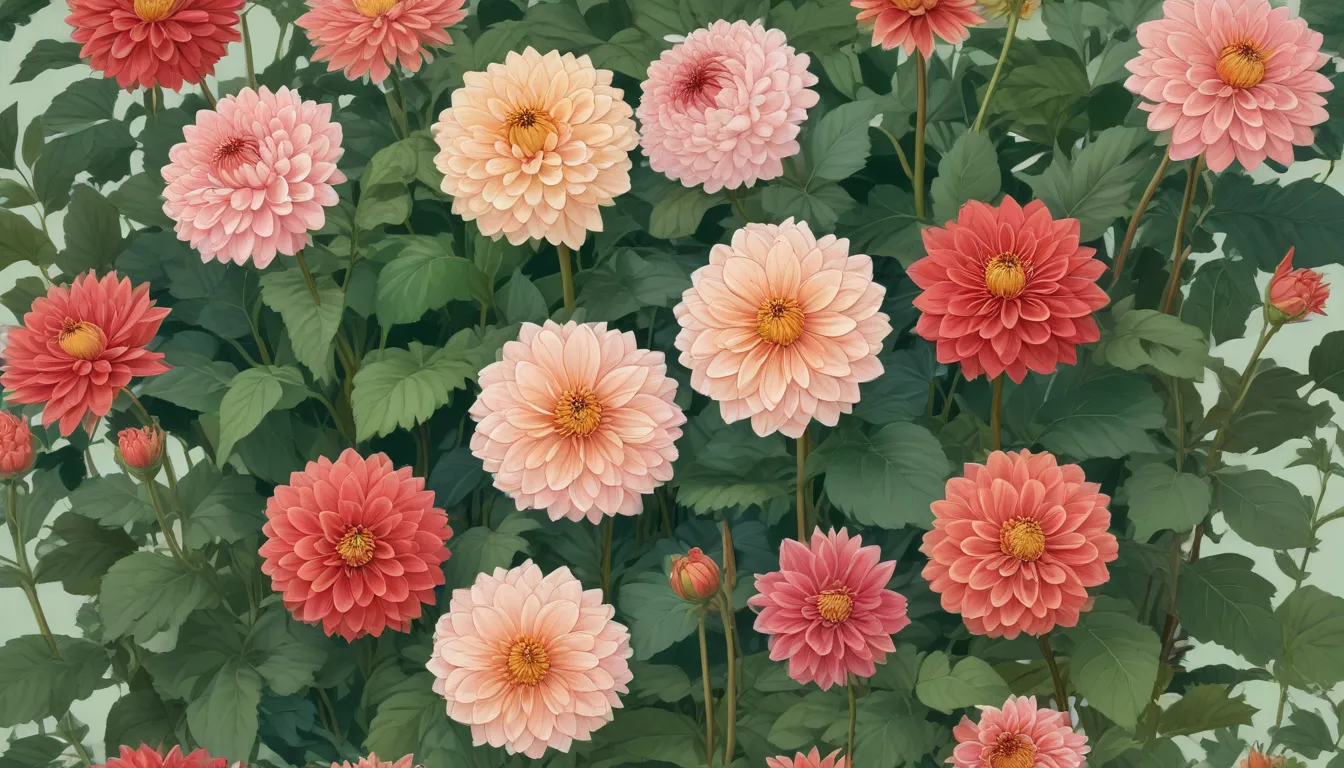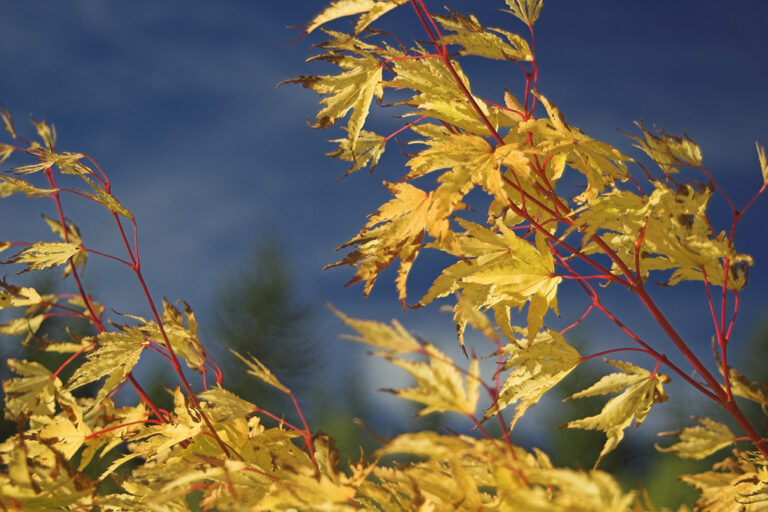How to Easily Propagate Dahlias from Stem and Tuber Cuttings

Are you a dahlia enthusiast who can’t get enough of these vibrant blooms? Whether you’re looking to expand your collection or simply want to share your love for dahlias with friends, propagating new plants from stem and tuber cuttings is an easy and cost-effective way to do so.
Picture this: you’ve just discovered a stunning dahlia variety that you can’t resist adding to your garden. Instead of purchasing expensive tubers, why not try propagating new plants from cuttings? It’s a fun and rewarding process that allows you to grow multiple plants from just one tuber.
In this article, we’ll walk you through the simple steps of propagating dahlias from cuttings, whether you choose to do it in spring or autumn. From preparing your tubers to caring for your cuttings, we’ve got you covered with all the essential information you need to successfully propagate dahlias at home.
What You’ll Learn
- The Benefits of Propagating Cuttings – Preparing Your Tubers – Gathering Equipment – Taking Cuttings From a Tuber – Taking Cuttings from Plants in the Garden – Caring for Dahlia Cuttings – Taking Cuttings in Autumn
The Benefits of Propagating Cuttings
While you can grow dahlias from seed, propagating from cuttings ensures you get plants that are true to the parent plant, with identical flowers. This method allows you to replicate your favorite varieties without the variation that comes from seeds.
Propagating cuttings is a cost-effective way to multiply your dahlia collection, especially if you have limited access to tubers. By propagating from cuttings, one tuber can yield multiple plants, making it an efficient and budget-friendly way to expand your garden.
Additionally, taking cuttings allows you to rescue valuable varieties that may not store well as tubers. Propagating from cuttings ensures that you can preserve these plants and keep them thriving in your garden for years to come.
Prepare Your Tubers
To start, you’ll need to prepare your tubers for propagation. If you’ve stored your tubers over winter, it’s time to bring them out in late winter to early spring. In warmer zones, you can leave your tubers in the ground over winter and take cuttings once new growth emerges.
To encourage sprouting, place your tubers in a propagation tray filled with damp potting mix, ensuring the eyes are facing upwards. Cover the tubers with potting soil and provide them with ample light and warmth. Consider using grow lights and a humidity dome to create the ideal conditions for sprouting.
Gather Equipment
As you wait for your tubers to sprout, gather the necessary equipment for taking and propagating your cuttings. Here’s what you’ll need:
- Seedling pots or a propagation tray – A sharp knife or scalpel – A container for rooting hormone – Bleach or horticultural disinfectant – Plastic labels – Soilless growing medium – A dibbler for creating planting holes – Rooting hormone (optional)
Invest in quality equipment such as reusable plastic pots, numbered propagation trays, and a sanitizing solution to ensure successful propagation of your cuttings.
Taking Cuttings From a Tuber
Once your tubers have sprouted, it’s time to take your cuttings. Select stems that are around three to four inches tall with at least two sets of leaves. Use a sharp, sterilized knife to cut the stem just above where it meets the tuber.
Remove the lowest pair of leaves and trim back the top leaves to redirect the plant’s energy towards root growth. If desired, use rooting hormone to encourage root development before planting your cuttings in a soilless growing medium.
Taking Cuttings from Plants in the Garden
Alternatively, you can take cuttings from mature dahlia plants in the garden. Select healthy shoots with multiple sets of leaves and cut them just under a pair of leaves. Remove any flower buds and excess leaves before planting the cuttings in pots with a growing medium.
Care for your cuttings with proper lighting, temperature, and humidity to ensure successful rooting. Provide your plants with the ideal growing conditions to encourage root development and prevent issues such as damping off or wilting.
How to Care for Dahlia Cuttings
To successfully propagate dahlias from cuttings, ensure your plants receive adequate light, warmth, and humidity. Use grow lights or natural light to provide at least 12 hours of light per day. Maintain an ambient temperature between 65 and 75°F and keep the soil slightly moist, but not wet.
Monitor your cuttings for signs of root development and transplant them into larger pots once they establish a healthy root system. Feed your plants with a balanced fertilizer to support leafy growth and prepare them for eventual transplanting into the garden.
Taking Cuttings in Autumn
For those looking to take cuttings in autumn, follow the same process as spring cuttings but expect slower growth due to the cooler temperatures. Be prepared to provide extra care and attention to your autumn cuttings to ensure their survival over the winter months.
By following these steps, you can successfully propagate dahlias from stem and tuber cuttings, allowing you to expand your collection, preserve valuable varieties, and share your love for dahlias with others. Whether you’re a seasoned dahlia grower or a beginner looking to try your hand at propagation, this process is a fun and rewarding way to grow new plants at home.
So, what are you waiting for? Start propagating your dahlias today and watch your garden bloom with vibrant colors and stunning blooms. Share your favorite dahlia varieties and propagation tips in the comments below!
For more information on growing and caring for dahlias, check out these helpful guides:
– How to Grow Delightful Dahlias: A Late Summer Standard – Dahlia Flower Types: A Guide to Groups and Classification – How to Prevent Dahlias from Falling Over: Support Options for Your Plants
Remember, with a little patience and care, you can enjoy a garden full of beautiful dahlias without breaking the bank. Happy propagating!
In conclusion, propagating dahlias from stem and tuber cuttings is a simple and rewarding way to grow new plants in your garden. By following the steps outlined in this article, you can successfully propagate dahlias at home and enjoy a vibrant garden full of beautiful blooms. Whether you’re a seasoned dahlia grower or a beginner looking to try your hand at propagation, this process is an easy and cost-effective way to expand your collection and share your love for dahlias with others. Happy gardening!





